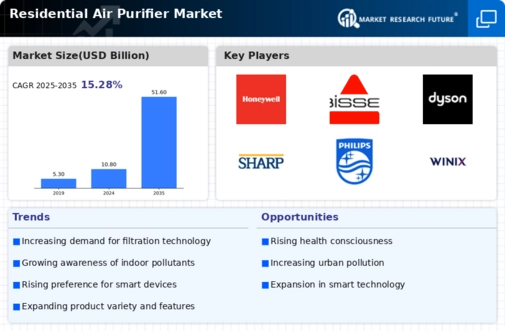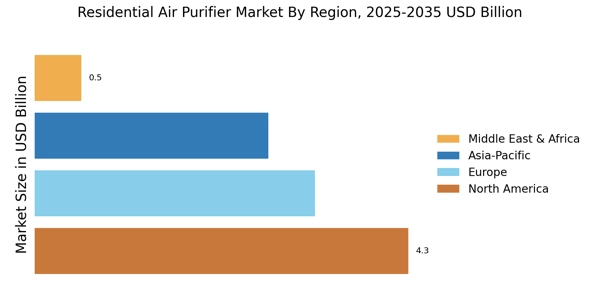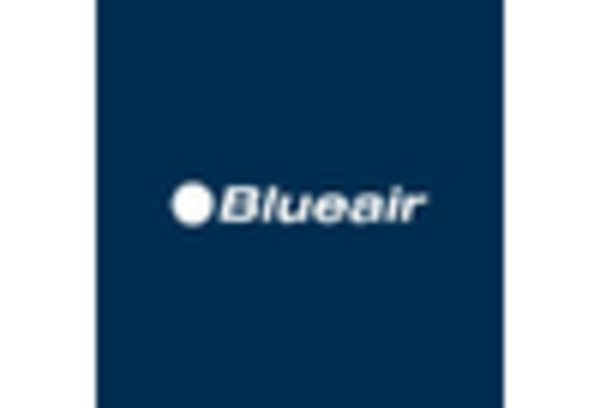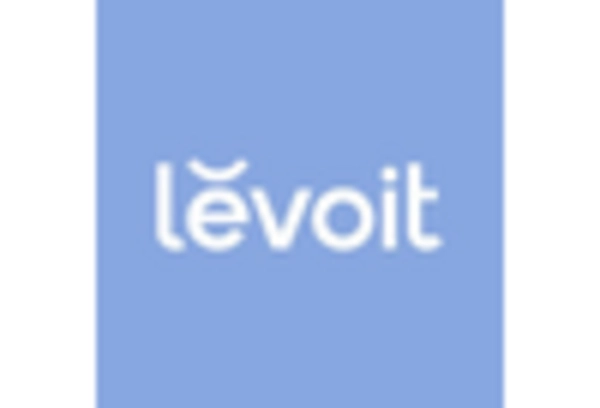Technological Innovations
Technological advancements in air purification systems are significantly influencing the Residential Air Purifier Market. Innovations such as HEPA filters, activated carbon filters, and UV-C light technology enhance the efficiency of air purifiers, making them more effective at removing allergens, bacteria, and viruses. The integration of smart technology, including app connectivity and air quality monitoring, is also becoming increasingly popular among consumers. These features not only improve user experience but also provide real-time data on air quality, which is essential for informed decision-making. As these technologies evolve, the Residential Air Purifier Market is expected to expand, with manufacturers continuously introducing new models that cater to diverse consumer needs.
Increased Disposable Income
The rise in disposable income among consumers is contributing to the growth of the Residential Air Purifier Market. As individuals experience improved financial stability, they are more inclined to invest in home appliances that enhance their quality of life. Air purifiers, once considered luxury items, are now becoming more accessible to a broader demographic. This shift is particularly evident in emerging markets, where rising middle-class populations are prioritizing health and comfort in their purchasing decisions. Market analysts suggest that this trend will continue, with the Residential Air Purifier Market expected to expand as more consumers allocate their disposable income towards air purification solutions.
Rising Health Consciousness
The growing awareness of health and wellness among consumers is driving the Residential Air Purifier Market. Individuals are increasingly recognizing the importance of maintaining a healthy living environment, particularly in light of respiratory issues and allergies. This heightened consciousness has led to a surge in demand for air purifiers, as they are perceived as essential tools for improving indoor air quality. Market data indicates that households with children or elderly members are more likely to invest in air purification systems, further propelling market growth. The Residential Air Purifier Market is thus positioned to benefit from this trend, as consumers prioritize products that contribute to their overall health and well-being.
Increasing Air Pollution Levels
The rising levels of air pollution in urban areas appear to be a primary driver for the Residential Air Purifier Market. According to recent data, particulate matter and volatile organic compounds have reached alarming levels, prompting consumers to seek solutions for cleaner indoor air. This trend is particularly evident in densely populated regions where outdoor air quality is compromised. As awareness of the health implications of poor air quality grows, more households are investing in air purifiers to mitigate these risks. The Residential Air Purifier Market is likely to see a surge in demand as individuals prioritize their health and well-being, leading to a projected growth rate of approximately 8% annually over the next few years.
Regulatory Support and Standards
Government regulations and standards aimed at improving air quality are playing a crucial role in shaping the Residential Air Purifier Market. Many countries are implementing stricter air quality guidelines, which encourage the adoption of air purification technologies in residential settings. This regulatory support not only raises awareness about the importance of clean air but also incentivizes manufacturers to innovate and comply with these standards. As a result, the market is likely to witness an influx of new products that meet regulatory requirements, thereby enhancing consumer trust and driving sales. The Residential Air Purifier Market stands to gain from these developments, as compliance with regulations becomes a key selling point for manufacturers.


















Leave a Comment